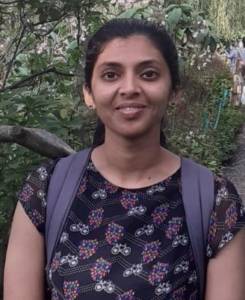« Les Grandes Avancées Françaises en Biologie » (prix dotés par la Fondation Mergier Bourdeix) de l’Académie des sciences récompensent douze jeunes chercheurs, auteurs d’avancées scientifiques majeures en biologie publiées en 2019, 2020 et 2021 dans des journaux de très haut niveau
Lors d’une séance exceptionnelle en ligne le 22 juin prochain, les lauréats et les lauréates, introduits par leurs directeurs et directrices de recherche, présenteront les travaux qui leur ont valu l’attribution du prix.
Lakshmi Balasubramaniam interviendra à 14h35, avec son directeur de recherche Benoit Ladoux, sur le thème :
L’importance des forces mécaniques dans l’organisation des tissus
Bio:
I have a Bachelors and Masters in Mechanical Engineering from National University of Singapore. After which, I moved to Paris to pursue a PhD in biophysics under Benoit Ladoux and Rene-Marc Mege at Institut Jacques Monod in 2017 with an INSPIRE Marie-Curie Fellowship.
Research:
Many biological processes depend on the collective activity of cells, and their interaction with each other. A balance of cell-cell interaction and cell-matrix interaction is involved in various developmental mechanisms such as tissue and tumor progression. This makes it important to characterize the nature of forces involved during such processes. Within tissues, individual cells often have an elongated shape and align themselves locally with a nematic liquid crystalline order. Cellular monolayers can thus be described as nematic active, materials in which molecular motors ensure cell movement. For individual cells in isolation, the forces exerted on the matrix are generally presented as opposing forces that pull inward along the cell’s long axis. However, at the collective level in epithelia, the nematic behavior of the system is altered, and this organization disappears to give way to pushing forces along the long axis. To understand these changes between the individual and the collective, we studied the impact of cell adhesion on the dynamics of these active nematic systems and in particular on the resulting alignment singularities, called topological defects. Through this work we demonstrate that a competition between cell-cell forces and cell-matrix forces can tune the nematic behaviour of cells. A loss of adhesion between cells induces, for example, a mechanical reinforcement at the matrix level that modifies the collective behavior of the cells. In the 1960s, M. Steinberg proposed that the movement of cells within a tissue and their segregation was related to the minimization of interfacial tension, a mechanism well known in bubbles. This new work proposes an alternative hypothesis and shows that the separation of cell populations can be explained by the emergence of different nematic behaviors modulated by adhesion properties. Our multidisciplinary work at the interface between biophysics and cell biology proposes a new framework to understand tissue self-organization based on the analogy with nematic active liquid crystals and the nature of internal forces.

